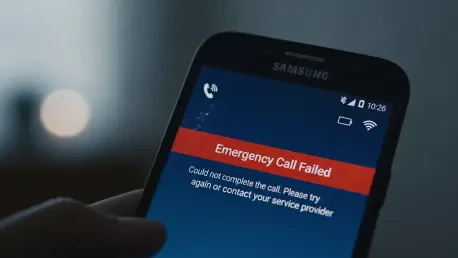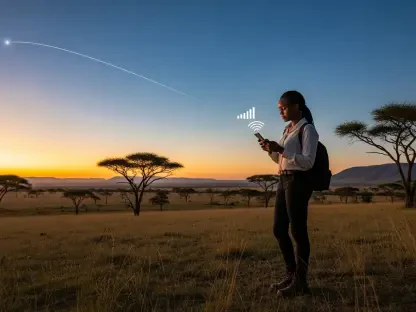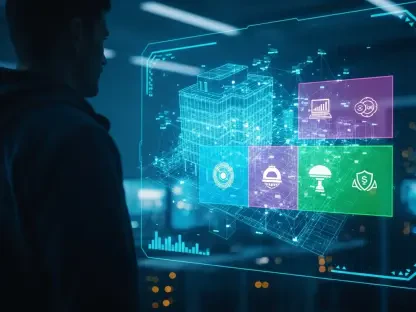In a heartbreaking turn of events that has sent shockwaves through Australia’s telecom landscape, a TPG Telecom customer in Sydney tragically passed away after their Samsung phone failed to connect to Triple Zero, the nation’s critical emergency services number, exposing alarming vulnerabilities in mobile technology and public safety. This incident, which came to light in late 2024, has ignited a firestorm of questions about how such a breakdown could occur in a system designed to save lives. Far from an isolated mishap, the failure was traced to outdated software on the device, incompatible with TPG Telecom’s Vodafone network during a moment of dire need. This tragedy casts a harsh light on the shared responsibility of telecom operators and device manufacturers to ensure seamless access to emergency services. As the details unfold, the urgency to address these gaps becomes undeniable, prompting a closer look at the systemic issues threatening millions of Australians.
Uncovering the Technical Breakdown
The root of this devastating incident lies in a technical mismatch that prevented life-saving communication. Investigations revealed that the Samsung handset in question, operating on TPG Telecom’s Vodafone network, was running outdated software incapable of properly initiating emergency calls to Triple Zero. This wasn’t a network outage or a random glitch but a known compatibility issue affecting certain older devices. Reports indicate that approximately 11 Samsung models are so outdated they require complete replacement, while nearly 60 others need immediate software updates to restore functionality. Despite prior warnings from both TPG Telecom and Samsung Australia about these risks, the message failed to prompt action in time for this customer. The incident underscores a critical flaw in ensuring that all devices, regardless of age, can reliably connect during emergencies, highlighting the need for robust solutions to bridge such technological gaps.
This technical failure carries profound implications for public safety across Australia. While telecom operators and manufacturers had identified the issue weeks before the tragedy, the lack of timely user response or awareness reveals a breakdown in communication. TPG Telecom, serving millions through its Vodafone network, had issued alerts to affected customers, emphasizing the urgency of updating or replacing non-compliant devices. Yet, for reasons still under scrutiny, these efforts fell short in preventing this loss of life. The compatibility issue isn’t merely a minor inconvenience—it’s a barrier to accessing a fundamental lifeline. With emergency calls often being the difference between survival and disaster, this incident serves as a stark reminder of the stakes involved. It also raises pressing questions about how to ensure that every user, regardless of their device’s age or their technical savvy, remains protected in critical moments.
A Troubling Trend in Emergency Failures
Beyond this single tragedy, a disturbing pattern of emergency call failures has emerged across Australia’s telecom sector, eroding public confidence in a system meant to be foolproof. Just months before this incident in 2024, Optus, another major operator, faced intense scrutiny after similar Triple Zero failures were linked to four deaths. These recurring issues suggest that the problem extends far beyond one network or manufacturer, pointing to systemic vulnerabilities in how emergency communication is managed. Whether due to outdated hardware, software glitches, or inadequate user notification, the inability to connect during crises is a risk that Australians can no longer ignore. The parallels between the TPG Telecom and Optus cases amplify concerns about whether the current infrastructure is equipped to handle the demands of modern technology and public safety needs.
The ripple effects of these failures are felt deeply by communities who rely on Triple Zero as their first line of defense in emergencies. Each incident chips away at the trust placed in telecom providers to deliver reliable service when it matters most. The fact that multiple operators have encountered similar breakdowns indicates a broader challenge in aligning network capabilities with the diverse range of devices in use today. Consumer frustration is palpable, as many question why such critical flaws persist despite advancements in mobile technology. With lives hanging in the balance, the urgency to address these patterns cannot be overstated. Regulatory bodies and industry stakeholders are now under immense pressure to dissect these failures and implement safeguards that prevent history from repeating itself, ensuring that no call for help goes unanswered due to preventable technical issues.
Regulatory Response and Industry Accountability
In the wake of this tragedy, the Australian government’s regulations aimed at protecting emergency access have come into sharp focus. The 2024 Emergency Service Call Determination mandates that telecom operators must block devices unable to connect to emergency services if users fail to update or replace them within a specified window of 28 to 35 days. TPG Telecom had been proactive in notifying affected customers, with their most recent warning issued on November 7, 2024, while Samsung Australia provided a detailed list of impacted models to guide users. Despite these measures, the fatal incident reveals potential gaps in user compliance or the effectiveness of these communications. The Australian Communications and Media Authority (ACMA) has launched an investigation into TPG Telecom’s adherence to Triple Zero rules, signaling that accountability will be rigorously enforced.
The regulatory scrutiny extends beyond mere compliance to the broader question of industry responsibility in safeguarding public welfare. ACMA’s probe into this case is not just about identifying breaches but also about understanding why preventive measures failed to avert disaster. Consumer advocacy group ACCAN has added to the pressure, with CEO Carol Bennett criticizing the emergency call ecosystem’s overall effectiveness. The group argues that transparency in oversight is lacking, leaving the public skeptical about whether current regulations are robust enough to protect them. This incident has intensified calls for telecom operators and manufacturers to collaborate more closely, ensuring that warnings translate into action. As investigations unfold, the outcome could set precedents for stricter rules or enhanced communication strategies, aiming to close the loopholes that allowed this tragedy to occur.
The Bigger Picture of Public Safety
Access to emergency services like Triple Zero is not just a convenience—it’s a fundamental right and a cornerstone of public safety for millions of Australians. The failure of a single device to connect during a crisis exposes a vulnerability that could affect anyone, regardless of their telecom provider or phone model. ACCAN’s pointed critique of the system resonates with a growing unease among consumers, many of whom now question whether they can rely on their devices in life-threatening situations. The emotional toll of such incidents is immeasurable, as families and communities grapple with losses that might have been prevented. This tragedy has become a catalyst for demanding not just fixes to technical issues but a complete reassessment of how emergency communication is prioritized and protected in Australia.
The urgency to restore faith in the system is palpable, as public safety hinges on seamless integration between technology and human response. Beyond the immediate fixes of software updates or device replacements, there’s a pressing need to educate users on the importance of heeding warnings from operators and manufacturers. The role of clear, accessible communication cannot be underestimated, especially for those who may not fully grasp the technical implications of outdated devices. Moreover, this incident highlights the disparity in access to newer technology, as not all users can afford to upgrade their phones at a moment’s notice. Addressing these socioeconomic factors alongside technical solutions is crucial to ensuring that no one is left behind when it comes to emergency access. The path forward must involve a holistic approach that tackles every layer of this complex issue.
Addressing Systemic Weaknesses for the Future
Looking at the broader landscape, the repeated emergency call failures—seen with both TPG Telecom and Optus—point to deep-seated flaws in Australia’s communication infrastructure. The interplay between handset compatibility, network reliability, and user action remains a fragile link that breaks under pressure, as evidenced by these tragic outcomes. Ongoing investigations by the Senate and ACMA into Triple Zero breakdowns are now tasked with accounting for this latest incident, pushing for a comprehensive overhaul of existing safeguards. The persistence of such issues despite regulatory frameworks suggests that current measures are insufficient to keep pace with technological evolution. A collaborative effort among telecom operators, device manufacturers, and regulators is essential to fortify the system against future failures.
Reflecting on what transpired, the focus must shift to actionable steps that prevent such losses from recurring. Strengthening enforcement of compliance, enhancing public awareness campaigns, and investing in technology that prioritizes emergency connectivity are vital next steps. Telecom providers could explore automated update mechanisms or subsidized device replacement programs to support users with older handsets. Meanwhile, regulators might consider tougher penalties for non-compliance alongside incentives for innovation in emergency communication protocols. As these discussions gain momentum, the hope is that the lessons learned from past tragedies will drive meaningful change, ensuring that every Australian can dial for help with the certainty that their call will be answered.









